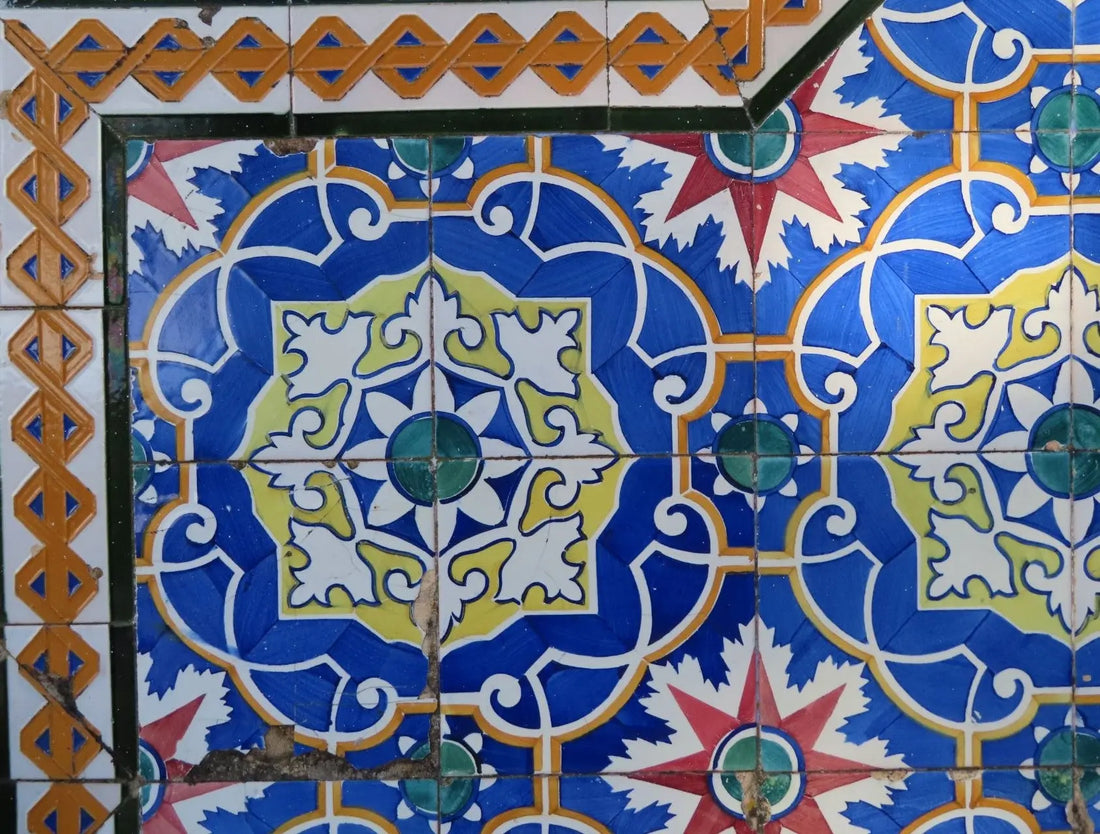Ceramic Tiles Introduced to the Iberian Peninsula in the 13th Century.
Blue and white glazed tiles bring brightness to architectural space, depict natural scenes, tell stories in a narrative sequence and extend architectural patterns through illusion. Together with architecture, they have been widely used for their technical properties and visual richness for centuries. In the Iberian Peninsula, the ceramic tiles were introduced by Moors in the 13th and 14th centuries and made their way to Spain.

Azulejos Brought from Spain to Portugal by a King.
Although azulejos are not a Portuguese invention, they have been used more imaginatively and prominently in Portugal than in any other country where they adorned buildings’ walls. In the 15th Century, during a visit to Spain, King Manuel I of Portugal fell in love with the shiny tile art adorning the walls there and introduced this tile mural art form to Portugal. As one of the wealthiest monarchs in the Christian world, he immediately imported azulejos from Seville, Spain to decorate his palace.
“Azulejos” Aren’t Named Because of the Color Azul (Blue).
It’s commonly assumed that the word “azulejos” is a derivation of azul (Portuguese for “blue”), but that isn’t the case. The word stems from Arabic and means “small polished stone”.
Why Was the Color Blue So Popular?
Even in the ancient world, the color blue was historically used because the semi-precious stone lapis lazuli (which means “stone of the sky”) was prized in antiquity for its royal blue hue and was thought to be connected with knowledge, insight, and magical powers. Later in history, blue was popular because it was associated with wealth and power.

Portugal Imported tile until the 17th Century.
Although azulejos has been a part of Portugal’s visual landscape for centuries, Portuguese tile makers didn’t exist until long after the country’s expansive use of azulejos began. It wasn’t until the 17th Century that Portuguese tile makers began to surface and refined the art of tile mural making.
There is no way to describe the richness of Portuguese azulejos adequately. Portuguese tile masters painted with a spontaneity that allowed for the same creativity artists apply to canvas. In fact, in the same way as canvas artists, Portuguese tile artists such as António Pereira, Manuel dos Santos, António de Oliveira Bernardes, and his son, António de Oliveira Bernardes, are also revered.
Azulejos rightfully hold a place in the lineup of Portugal’s cultural symbols along with poetic fado, the charming Galo de Barcelos, beautiful city wall murals and great food. They’ve held onto their popularity through centuries of change, and no doubt will stay a treasured part of Portugal’s history forever.
From your friends at Rooster Camisa, happy Azulejos to you!



